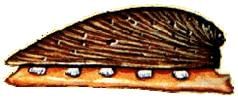Test: Evidences of Organic Evolution - Grade 12 MCQ
30 Questions MCQ Test - Test: Evidences of Organic Evolution
_______ was the island where Darwin visited and discovered adaptive radiation?
Archaeopteryx is connecting link because :
[BHU 82]
Which of the following organ in man is not vestigial
[CPMT 801]
Which of the following set in men include vestigial organs :
[CPMT 81
Galapagos islands are connected with which scientist :
[BHU 80]
Branch of biology which deals with fossils :
[CPMT 75]
Which food habit of Darwin’s finches lead to the development of many other varieties?
Theory of evolution is mainly concerned with :
[CPMT 73]
Prototheria have developed from
[BHU 80, CPMT 77]
Which of the following has homologous organs :
[NCERT 78]
Which of the following organs in man is vestigial :
[CPMT 77]
Who was the first to explain recapitulatin theory :
[CPMT 78, 80]
Connecting link between protozoa and one celled plants is :
[CPMT 71, 72; NCERT 72]
Connecting link between annelida and mollusca :
Change with desent is the basis of which theory :
If a particular animal hs shelled eggs, hair and tears of the body and has cloaca, it may be a connecting link between
Which of the following sets do not have homologous organs :
If a starfish possess 6 arms instead of 5, it is an example of :
[CPMT 84]
Wings of locust, pigeon, and bat are example of :
[CPMT 84]
Theory of inheritance of acquired characters was given by
Fossil X can be considered to have evolved earlier than fossil Y if :
[CPMT 93]
Golden age of Dinosaurs was during:
[NCERT 761]
What is sequence in the evolution of man
[BHU 80]















